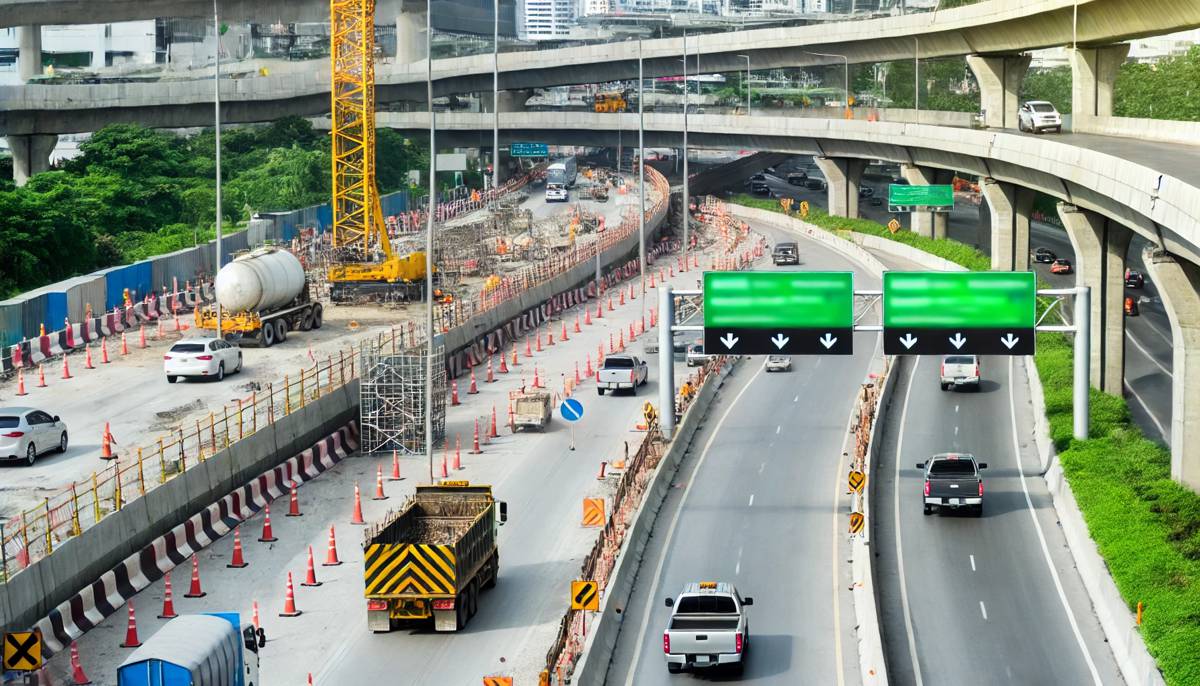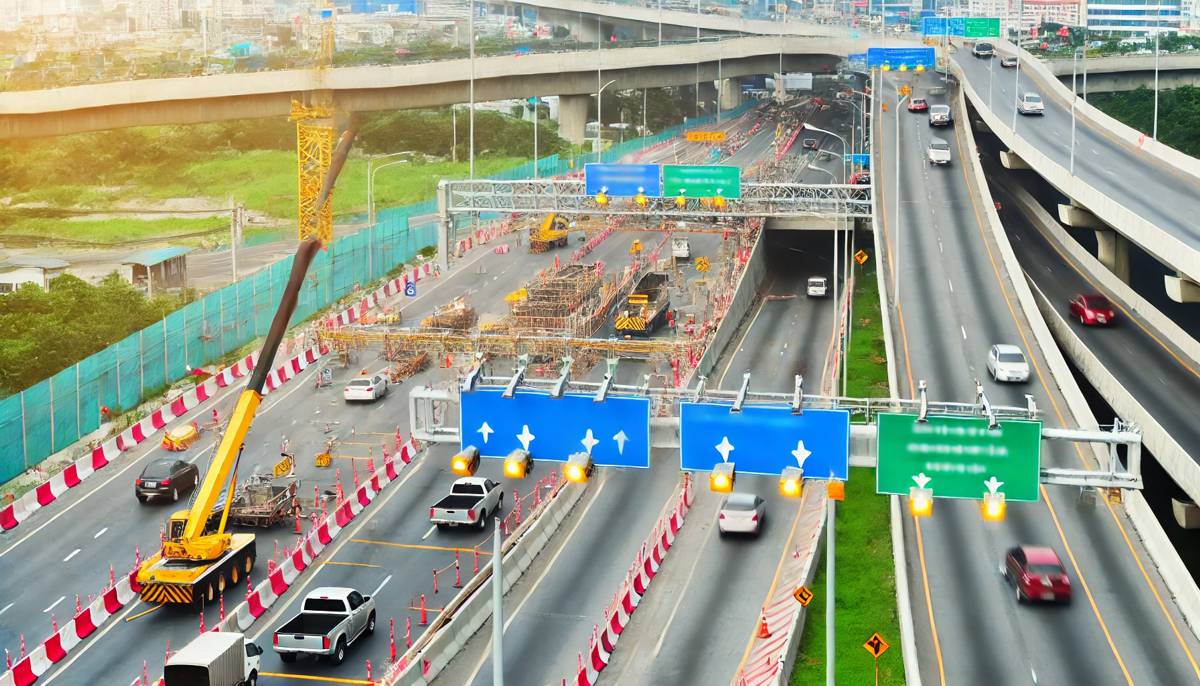Leveraging Data to Optimise Highway Construction Projects
In the bustling world of highway construction, maintaining traffic flow while expanding infrastructure is a balancing act that demands precision.
The Georgia Department of Transportation (GDOT) and California’s Caltrans have risen to this challenge using innovative real-time data solutions, ensuring construction projects stay on track without gridlocking the roads.
Let’s delve into how these two giants of road management are using data to drive construction efficiency.
Keeping Traffic Moving Amid Major Roadwork
The I-285/SR 400 interchange, stretching over 5 miles in Atlanta, is one of the busiest corridors in Georgia. It’s no surprise that when the Georgia Department of Transportation (GDOT) embarked on a massive overhaul, the stakes were high. The project, designed to add new lanes, ramps, and bridges, aimed to ease congestion—but ironically, the construction itself posed the risk of even worse traffic jams.
One major hurdle was the lack of traffic volume data on newly constructed lanes. Traditional physical counters were either removed during the construction phase or simply absent on new segments. This data gap could have turned the project into a nightmare for drivers. However, GDOT found a way forward by partnering with Jacobs and using StreetLight’s real-time traffic data.
Real-Time Data for Real-Time Solutions
StreetLight provided near-instantaneous traffic volume and speed insights, allowing GDOT to strategise lane closures with minimal disruptions. According to Marlo Clowers from GDOT: “The data has certainly saved time in GDOT’s ability to respond to requests for lane closures and detours… Time savings also always equate to monetary savings.”
By analysing traffic patterns, GDOT could green-light closures during periods of least impact, ensuring construction proceeded smoothly without turning the interchange into a parking lot. This data-centric approach proved to be a game-changer, reducing both congestion and public frustration.

Caltrans’ Mission to Minimise Delays in California
Over on the West Coast, Caltrans faces its own set of challenges. Managing over 50,000 freeway miles, the agency’s mission is clear: minimise delays and maximise safety while keeping projects on schedule. The agency’s approach hinges on meticulous detour planning and post-construction analysis to refine future projects.
In a recent pavement repair project in Sacramento, Caltrans District 3 found its traditional data sources—like the Performance Measurement System (PeMS)—falling short. The PeMS network, reliant on loop detectors embedded in the roads, had significant data gaps, leaving planners in the dark about real-time conditions.
A New Era of Data Collection
To fill this gap, Caltrans turned to StreetLight’s comprehensive data analysis tools. By harnessing real-time traffic information, the team could measure detour impacts down to the minute. The result? Faster project completion times and less inconvenience for commuters.
Kingshan Wong, a traffic management engineer at Caltrans, noted: “The advantage of StreetLight over PeMS is its reliability. We no longer rely on the health of road sensors… Without StreetLight, we were often forced to make a judgment call without the most recent data.”
By comparing before-and-after travel times, Caltrans discovered that delays were significantly shorter than expected—sometimes reduced from an hour to mere minutes. This newfound efficiency allowed them to extend construction hours, further accelerating project timelines.
The Data-Driven Approach
Both GDOT and Caltrans faced a common enemy: incomplete data. However, their solutions revolved around a shared strategy—leveraging StreetLight’s real-time analytics. By using data from multiple sources, including mobile apps and GPS signals, StreetLight provides a comprehensive picture of traffic flow without relying on outdated or malfunctioning physical sensors.
These agencies could now:
- Predict traffic congestion: Identify peak hours for lane closures, reducing bottlenecks.
- Optimise detours: Adjust routes in real-time based on current traffic patterns.
- Extend construction hours: With accurate data, agencies could confidently increase work times without causing chaos.
This method of leveraging real-time data analytics represents a paradigm shift in how road agencies approach construction. No longer tied to unreliable physical sensors, they’re now able to monitor, analyse, and adjust on the fly, ensuring smoother operations and happier commuters.
Empowering Agencies with Reliable Data
The experiences of GDOT and Caltrans highlight a growing trend in infrastructure management—using digital tools to make data-driven decisions. By implementing StreetLight’s solutions, both agencies not only optimised their current projects but also set a precedent for future ones.
What’s clear is that these tools are more than just nice-to-haves. They’re essential in an era where commuters demand quick solutions and infrastructure projects can’t afford delays. The benefits are clear:
- Cost savings: Faster decisions mean reduced labour costs and project timelines.
- Improved public satisfaction: Less congestion leads to happier commuters.
- Enhanced safety: Fewer traffic queues and hazardous detours reduce accident risks.
The future, it seems, lies in blending smart data analytics with traditional construction expertise. This hybrid approach could well define the next generation of infrastructure projects, where efficiency and driver satisfaction go hand in hand.
Paving the Way Forward
As agencies like GDOT and Caltrans continue to refine their data-driven approaches, the industry stands on the brink of a transformation. By embracing real-time traffic analytics, they’re not just managing roads; they’re setting new standards for how large-scale infrastructure projects are executed.
With more projects expected to adopt similar technologies, the road ahead looks smoother—for both construction crews and commuters.




















